264 papers:
 DATE-2015-FuZLX #manycore #memory management
DATE-2015-FuZLX #manycore #memory management- Maximizing common idle time on multi-core processors with shared memory (CF, YZ, ML, CJX), pp. 900–903.
 VLDB-2015-El-HelwRSCGP #database #optimisation
VLDB-2015-El-HelwRSCGP #database #optimisation- Optimization of Common Table Expressions in MPP Database Systems (AEH, VR, MAS, GCC, ZG, MP), pp. 1704–1715.
 MSR-2015-HonselHG #evaluation #stack overflow
MSR-2015-HonselHG #evaluation #stack overflow- Intuition vs. Truth: Evaluation of Common Myths about StackOverflow Posts (VH, SH, JG), pp. 438–441.
 SANER-2015-AlawnehHH #analysis #metamodelling #performance #towards
SANER-2015-AlawnehHH #analysis #metamodelling #performance #towards- Towards a common metamodel for traces of high performance computing systems to enable software analysis tasks (LA, AHL, JH), pp. 111–120.
 CHI-2015-PandeyRSNB #analysis #empirical #how #visualisation
CHI-2015-PandeyRSNB #analysis #empirical #how #visualisation- How Deceptive are Deceptive Visualizations?: An Empirical Analysis of Common Distortion Techniques (AVP, KR, MLS, ON, EB), pp. 1469–1478.
 ICEIS-v1-2015-AwasthiLK #algorithm #linear #problem #sequence #strict
ICEIS-v1-2015-AwasthiLK #algorithm #linear #problem #sequence #strict- Un-restricted Common Due-Date Problem with Controllable Processing Times — Linear Algorithm for a Given Job Sequence (AA, JL, OK), pp. 526–534.
 KDD-2015-KimCKRP #matrix #topic
KDD-2015-KimCKRP #matrix #topic- Simultaneous Discovery of Common and Discriminative Topics via Joint Nonnegative Matrix Factorization (HK, JC, JK, CKR, HP), pp. 567–576.
 SIGIR-2015-HarelY #clustering #identification #query
SIGIR-2015-HarelY #clustering #identification #query- Modularity-Based Query Clustering for Identifying Users Sharing a Common Condition (MGOH, EYT), pp. 819–822.
 POPL-2015-Buneman #database #programming #question
POPL-2015-Buneman #database #programming #question- Databases and Programming: Two Subjects Divided by a Common Language? (PB), p. 487.
 POPL-2015-VafeiadisBCMN #compilation #memory management #optimisation #what
POPL-2015-VafeiadisBCMN #compilation #memory management #optimisation #what- Common Compiler Optimisations are Invalid in the C11 Memory Model and what we can do about it (VV, TB, SC, RM, FZN), pp. 209–220.
 ICSE-v1-2015-DeweyNH #automation #data type #generative
ICSE-v1-2015-DeweyNH #automation #data type #generative- Automated Data Structure Generation: Refuting Common Wisdom (KD, LN, BH), pp. 32–43.
 SPLC-2015-FontBHC #automation #formal method #product line #variability
SPLC-2015-FontBHC #automation #formal method #product line #variability- Automating the variability formalization of a model family by means of common variability language (JF, MB, ØH, CC), pp. 411–418.
 HPCA-2015-LeeKPKSCM #adaptation #optimisation
HPCA-2015-LeeKPKSCM #adaptation #optimisation- Adaptive-latency DRAM: Optimizing DRAM timing for the common-case (DL, YK, GP, SMK, VS, KKWC, OM), pp. 489–501.
 CBSE-2014-HorcasPF #architecture #injection #quality #variability
CBSE-2014-HorcasPF #architecture #injection #quality #variability- Injecting quality attributes into software architectures with the common variability language (JMH, MP, LF), pp. 35–44.
 DAC-2014-LinWC #data mining #design #logic #mining #named #power management #synthesis
DAC-2014-LinWC #data mining #design #logic #mining #named #power management #synthesis- C-Mine: Data Mining of Logic Common Cases for Low Power Synthesis of Better-Than-Worst-Case Designs (CHL, LW, DC), p. 6.
 HT-2014-SharmaSS #process #social #twitter
HT-2014-SharmaSS #process #social #twitter- Inferring social ties from common activities in twitter (US, AS, SS), pp. 318–320.
 ESOP-2014-Fu #abstraction #analysis #memory management
ESOP-2014-Fu #abstraction #analysis #memory management- Targeted Update — Aggressive Memory Abstraction Beyond Common Sense and Its Application on Static Numeric Analysis (ZF), pp. 534–553.
 ICSME-2014-LinXPL0ZD #maintenance #named
ICSME-2014-LinXPL0ZD #maintenance #named- Clonepedia: Summarizing Code Clones by Common Syntactic Context for Software Maintenance (YL, ZX, XP, YL, JS, WZ, JSD), pp. 341–350.
 ILC-2014-Cooper #knowledge base #lisp
ILC-2014-Cooper #knowledge base #lisp- A Gentle Introduction to Gendl®, a Common Lisp-based Knowledge Based Engineering Environment (DC), p. 6.
 ILC-2014-Smith #lisp #programming
ILC-2014-Smith #lisp #programming- Common Lisp’s Predilection for Mathematical Programming (RS), p. 10.
 ILC-2014-SmithP #finite #lisp #performance #permutation
ILC-2014-SmithP #finite #lisp #performance #permutation- Efficient Finite Permutation Groups and Homomesy Computation in Common Lisp (RS, BP), p. 60.
 ILC-2014-Strandh #lisp #performance
ILC-2014-Strandh #lisp #performance- Fast Generic Dispatch for Common Lisp (RS), p. 89.
 CHI-2014-MurerJSS #comprehension
CHI-2014-MurerJSS #comprehension- Taking things apart: reaching common ground and shared material understanding (MM, MJ, SS, PS), pp. 469–472.
 DHM-2014-IkenoboKKTG #classification
DHM-2014-IkenoboKKTG #classification- The Classification Tendency and Common Denomination of the Points Paid Attention in Ikebana Instruction (YI, NK, NK, YT, AG), pp. 263–272.
 DUXU-DI-2014-AderholdWCJGK #3d #framework #implementation #novel #towards #web
DUXU-DI-2014-AderholdWCJGK #3d #framework #implementation #novel #towards #web- The Common Implementation Framework as Service — Towards Novel Applications for Streamlined Presentation of 3D Content on the Web (AA, KW, MC, YJ, HG, AK), pp. 3–14.
 DUXU-TMT-2014-MasipOG #evaluation #heuristic #industrial #user interface
DUXU-TMT-2014-MasipOG #evaluation #heuristic #industrial #user interface- Common Industry Format (CIF) Report Customization for UX Heuristic Evaluation (LM, MO, TG), pp. 475–483.
 LCT-TRE-2014-SofticVMWE #research #using
LCT-TRE-2014-SofticVMWE #research #using- Finding and Exploring Commonalities between Researchers Using the ResXplorer (SS, LDV, EM, RVdW, ME), pp. 486–494.
 ICML-c2-2014-WuCLY #behaviour #consistency #learning #network #predict #social
ICML-c2-2014-WuCLY #behaviour #consistency #learning #network #predict #social- Learning the Consistent Behavior of Common Users for Target Node Prediction across Social Networks (SHW, HHC, KHL, PSY), pp. 298–306.
 ICPR-2014-LuZXGW #approximate #morphism #quantum
ICPR-2014-LuZXGW #approximate #morphism #quantum- Approximate Maximum Common Sub-graph Isomorphism Based on Discrete-Time Quantum Walk (KL, YZ, KX, YG, RCW), pp. 1413–1418.
 ECMFA-2014-MartinezZKT #identification #variability #visualisation
ECMFA-2014-MartinezZKT #identification #variability #visualisation- Identifying and Visualising Commonality and Variability in Model Variants (JM, TZ, JK, YLT), pp. 117–131.
 SAC-2014-LiMZ #using #visualisation
SAC-2014-LiMZ #using #visualisation- Visualization of oceanographic applications using a common data model (JL, ZPM, KZ), pp. 933–938.
 SPLC-2014-KodamaSTKT #case study #experience
SPLC-2014-KodamaSTKT #case study #experience- Experiences with commonality control procedures to develop clinical instrument system (RK, JS, YT, SK, ST), pp. 254–263.
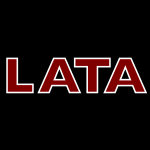 LATA-2013-Blanchet-SadriL #problem #word
LATA-2013-Blanchet-SadriL #problem #word- Suffix Trees for Partial Words and the Longest Common Compatible Prefix Problem (FBS, JL), pp. 165–176.
 CSCW-2013-WangFC #idea
CSCW-2013-WangFC #idea- Machine translation vs. common language: effects on idea exchange in cross-lingual groups (HCW, SRF, DC), pp. 935–944.
 DUXU-CXC-2013-WilkosinskaAGJ #framework #implementation #online #towards
DUXU-CXC-2013-WilkosinskaAGJ #framework #implementation #online #towards- Towards a Common Implementation Framework for Online Virtual Museums (KW, AA, HG, YJ), pp. 321–330.
 HCI-AMTE-2013-Bevan #documentation #industrial #using
HCI-AMTE-2013-Bevan #documentation #industrial #using- Using the Common Industry Format to Document the Context of Use (NB), pp. 281–289.
 HCI-IMT-2013-Farhadi-NiakiEA #analysis #design #gesture #usability
HCI-IMT-2013-Farhadi-NiakiEA #analysis #design #gesture #usability- Design and Usability Analysis of Gesture-Based Control for Common Desktop Tasks (FFN, SAE, AA), pp. 215–224.
 HCI-UC-2013-Kampf #configuration management #design #mobile #online
HCI-UC-2013-Kampf #configuration management #design #mobile #online- Reconfiguring the Corporate and Commons: Mobile and Online Activism as a Form of Socio-technical Design (CK), pp. 388–395.
 HIMI-HSM-2013-ZiccardiRORMBSCVS
HIMI-HSM-2013-ZiccardiRORMBSCVS- Measuring UAS Pilot Responses to Common Air Traffic Clearances (JZ, ZR, RO, RCR, GM, VB, TZS, DC, KPLV, JS), pp. 606–612.
 HIMI-LCCB-2013-ToumotoHH #development #evaluation #mobile
HIMI-LCCB-2013-ToumotoHH #development #evaluation #mobile- Development and Evaluation of a Mobile Search System for Science Experiments to Connect School Knowledge to Common Knowledge (TT, TH, TH), pp. 147–156.
 MLDM-2013-LiM #community #mining #network #topic
MLDM-2013-LiM #community #mining #network #topic- Mining Groups of Common Interest: Discovering Topical Communities with Network Flows (LL, NDM), pp. 405–420.
 SEKE-2013-DoranGD #comprehension #online #social #social media
SEKE-2013-DoranGD #comprehension #online #social #social media- Understanding Common Perceptions from Online Social Media (DD, SSG, AD), pp. 107–112.
 SEKE-2013-SilvaVMA #approach #product line
SEKE-2013-SilvaVMA #approach #product line- Scrum-based Approach for Analyzing Commonalities and Variabilities in Software Product Lines (IFdS, TV, SRLM, ESdA), pp. 238–243.
 SAC-2013-BeckersFHHC #development
SAC-2013-BeckersFHHC #development- Common criteria compliant software development (CC-CASD) (KB, SF, DH, MH, IC), pp. 1298–1304.
 SAC-2013-DelahayeKS #c #dynamic analysis #source code #specification
SAC-2013-DelahayeKS #c #dynamic analysis #source code #specification- Common specification language for static and dynamic analysis of C programs (MD, NK, JS), pp. 1230–1235.
 SPLC-2013-FerrariSd #documentation #mining #natural language
SPLC-2013-FerrariSd #documentation #mining #natural language- Mining commonalities and variabilities from natural language documents (AF, GOS, FD), pp. 116–120.
 SPLC-2013-HaugenWC #named #variability
SPLC-2013-HaugenWC #named #variability- CVL: common variability language (ØH, AW, KC), p. 277.
 HPCA-2013-ZebchukCTSM #named
HPCA-2013-ZebchukCTSM #named- RECAP: A region-based cure for the common cold (cache) (JZ, HWC, XT, VS, AM), pp. 83–94.
 PPoPP-2013-DeoK #array #gpu #parallel
PPoPP-2013-DeoK #array #gpu #parallel- Parallel suffix array and least common prefix for the GPU (MD, SK), pp. 197–206.
 ICST-2013-DadeauCLTVBT #evaluation #generative #testing
ICST-2013-DadeauCLTVBT #evaluation #generative #testing- Test Generation and Evaluation from High-Level Properties for Common Criteria Evaluations — The TASCCC Testing Tool (FD, KCC, YL, TT, GV, JB, ST), pp. 431–438.
 ASE-2012-SharT #predict #validation #web
ASE-2012-SharT #predict #validation #web- Predicting common web application vulnerabilities from input validation and sanitization code patterns (LKS, HBKT), pp. 310–313.
 CASE-2012-ChenF #analysis #rule-based
CASE-2012-ChenF #analysis #rule-based- Treatment of missing values for association rule-based tool commonality analysis in semiconductor manufacturing (RHC, CMF), pp. 886–891.
 CASE-2012-SintovRMS #algorithm #set
CASE-2012-SintovRMS #algorithm #set- A common 3-finger grasp search algorithm for a set of planar objects (AS, SR, RM, AS), pp. 1095–1100.
 DATE-2012-ZhaoYZCL #architecture #array #memory management
DATE-2012-ZhaoYZCL #architecture #array #memory management- Architecting a common-source-line array for bipolar non-volatile memory devices (BZ, JY, YZ, YC, HL), pp. 1451–1454.
 HT-2012-LimD #community #detection #twitter
HT-2012-LimD #community #detection #twitter- Following the follower: detecting communities with common interests on twitter (KHL, AD), pp. 317–318.
 LATA-2012-BilleGK
LATA-2012-BilleGK- Longest Common Extensions via Fingerprinting (PB, ILG, JK), pp. 119–130.
 CHI-2012-HietanenSAL #image
CHI-2012-HietanenSAL #image- : helping the legal use of creative commons images (HH, AS, KA, YL), pp. 599–608.
 CHI-2012-KimCZT #concurrent
CHI-2012-KimCZT #concurrent- Enabling concurrent dual views on common LCD screens (SK, XC, HZ, DST), pp. 2175–2184.
 ICEIS-J-2012-AmarGMHLN12a #automation #concept analysis
ICEIS-J-2012-AmarGMHLN12a #automation #concept analysis- Finding Semi-Automatically a Greatest Common Model Thanks to Formal Concept Analysis (BA, AOG, AM, MH, TL, CN), pp. 72–91.
 ICEIS-v1-2012-AmarGMHLN #concept analysis #using
ICEIS-v1-2012-AmarGMHLN #concept analysis #using- Using Formal Concept Analysis to Extract a Greatest Common Model (BA, AOG, AM, MH, TL, CN), pp. 27–37.
 CIKM-2012-LiuCBLR #graph #mining
CIKM-2012-LiuCBLR #graph #mining- Utilizing common substructures to speedup tensor factorization for mining dynamic graphs (WL, JC, JB, CL, KR), pp. 435–444.
 ICPR-2012-ErYAK #analysis #modelling
ICPR-2012-ErYAK #analysis #modelling- Traffic accident risk analysis based on relation of Common Route Models (UE, SY, OA, MEK), pp. 2561–2564.
 ICPR-2012-KongW #clustering #learning #multi
ICPR-2012-KongW #clustering #learning #multi- A multi-task learning strategy for unsupervised clustering via explicitly separating the commonality (SK, DW), pp. 771–774.
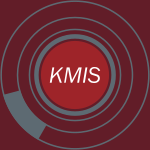 KMIS-2012-DurantiX #development #information management
KMIS-2012-DurantiX #development #information management- Knowledge Management & Records Management — Establishing Relationships for Common Development (LD, SLX), pp. 247–250.
 KMIS-2012-RakthinCC #effectiveness
KMIS-2012-RakthinCC #effectiveness- More Effective Transfer of Competitor and Customer Intelligence — Mediating Roles of Common Knowledge Sharing and Source Credibility (SR, RJC, SC), pp. 251–256.
 SAC-2012-ChenNX #collaboration #recommendation
SAC-2012-ChenNX #collaboration #recommendation- A common neighbour based two-way collaborative recommendation method (LC, RN, YX), pp. 214–215.
 SAC-2012-SeelandBKP
SAC-2012-SeelandBKP- Maximum Common Subgraph based locally weighted regression (MS, FB, SK, BP), pp. 165–172.
 SLE-2012-GuizzardiZ #concept #modelling
SLE-2012-GuizzardiZ #concept #modelling- A Common Foundational Theory for Bridging Two Levels in Ontology-Driven Conceptual Modeling (GG, VZ), pp. 286–310.
 HPDC-2012-LuckowSWMMJ #towards
HPDC-2012-LuckowSWMMJ #towards- Towards a common model for pilot-jobs (AL, MS, OW, AM, SM, SJ), pp. 123–124.
 ICLP-J-2012-AreiasR #concurrent #multi #thread #towards #using
ICLP-J-2012-AreiasR #concurrent #multi #thread #towards #using- Towards multi-threaded local tabling using a common table space (MA, RR), pp. 427–443.
 ICST-2012-SegallTZ12a #combinator #modelling
ICST-2012-SegallTZ12a #combinator #modelling- Common Patterns in Combinatorial Models (IS, RTB, AZ), pp. 624–629.
 DAC-2011-LinLCHC #random
DAC-2011-LinLCHC #random- Common-centroid capacitor placement considering systematic and random mismatches in analog integrated circuits (CWL, JML, YCC, CPH, SJC), pp. 528–533.
 DocEng-2011-GippM #algorithm #detection #pattern matching #sequence
DocEng-2011-GippM #algorithm #detection #pattern matching #sequence- Citation pattern matching algorithms for citation-based plagiarism detection: greedy citation tiling, citation chunking and longest common citation sequence (BG, NM), pp. 249–258.
 DUXU-v1-2011-Renner #design #how #image #process #question #visual notation
DUXU-v1-2011-Renner #design #how #image #process #question #visual notation- Image, Imagination, Innovation: How Can We Overcome the Common Ground in the Processes of Visual Design? (MR), pp. 285–294.
 IDGD-2011-Yang11a #communication
IDGD-2011-Yang11a #communication- Common Task-Oriented Communication Tool Applied in Radiology Department of Hospital (RY), pp. 238–247.
 AdaEurope-2011-Rodriguez-LopezG #abstraction #architecture #middleware #paradigm
AdaEurope-2011-Rodriguez-LopezG #abstraction #architecture #middleware #paradigm- Architecting a Common Bridge Abstraction over Different Middleware Paradigms (IRL, MGV), pp. 132–146.
 ICEIS-v4-2011-MiaoG #integration
ICEIS-v4-2011-MiaoG #integration- Yearbook Data Integration based on Common Warehouse Model (GM, JG), pp. 569–573.
 CIKM-2011-LinTC #classification #independence #sentiment #using #word
CIKM-2011-LinTC #classification #independence #sentiment #using #word- Language-independent sentiment classification using three common words (ZL, ST, XC), pp. 1041–1046.
 KDD-2011-WangBB #analysis #component #matrix #multi
KDD-2011-WangBB #analysis #component #matrix #multi- Common component analysis for multiple covariance matrices (HW, AB, DB), pp. 956–964.
 KMIS-2011-SchwittekSEH #towards
KMIS-2011-SchwittekSEH #towards- Towards a Common Body of Knowledge for Engineering Secure Software and Services (WS, HS, SE, MH), pp. 369–374.
 SEKE-2011-PratAC #modelling
SEKE-2011-PratAC #modelling- Mapping CommonKADS Knowledge Models into PRR (NP, JA, ICW), pp. 143–148.
 SAC-2011-Fournier-VigerNT #mining #named #sequence
SAC-2011-Fournier-VigerNT #mining #named #sequence- RuleGrowth: mining sequential rules common to several sequences by pattern-growth (PFV, RN, VSMT), pp. 956–961.
 SAC-2011-WajidMNG #comprehension #documentation #enterprise #tool support
SAC-2011-WajidMNG #comprehension #documentation #enterprise #tool support- Tool support for realising a common understanding of business documents in collaborating enterprises (UW, NM, AN, PG), pp. 331–333.
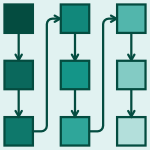 PLEASE-2011-ChastekDM #analysis #variability
PLEASE-2011-ChastekDM #analysis #variability- Commonality and variability analysis for resource constrained organizations (GJC, PD, JDM), pp. 31–34.
 ICST-2011-FraserZ #generative #testing
ICST-2011-FraserZ #generative #testing- Exploiting Common Object Usage in Test Case Generation (GF, AZ), pp. 80–89.
 CASE-2010-GujarathiM #generative #integration #using
CASE-2010-GujarathiM #generative #integration #using- Generative CAD and CAE integration using common data model (GPG, YM), pp. 586–591.
 DocEng-2010-Hassan #algorithm #evaluation #recognition #towards
DocEng-2010-Hassan #algorithm #evaluation #recognition #towards- Towards a common evaluation strategy for table structure recognition algorithms (TH), pp. 255–258.
 CSMR-2010-KnieselBHFCGT #design pattern #detection #tool support
CSMR-2010-KnieselBHFCGT #design pattern #detection #tool support- DPDX--Towards a Common Result Exchange Format for Design Pattern Detection Tools (GK, AB, PH, LJF, AC, YGG, NT), pp. 232–235.
 ICSM-2010-KameiMMMAH #debugging #modelling #predict #using
ICSM-2010-KameiMMMAH #debugging #modelling #predict #using- Revisiting common bug prediction findings using effort-aware models (YK, SM, AM, KiM, BA, AEH), pp. 1–10.
 LATA-2010-Arslan #algorithm #performance #sequence #string
LATA-2010-Arslan #algorithm #performance #sequence #string- A Fast Longest Common Subsequence Algorithm for Similar Strings (ANA), pp. 82–93.
 ILC-2010-Maraist #lisp #named #testing
ILC-2010-Maraist #lisp #named #testing- NST: a unit testing system for common Lisp (JM), pp. 53–64.
 CHI-2010-ScupelliXFKG #aspect-oriented #coordination #physics
CHI-2010-ScupelliXFKG #aspect-oriented #coordination #physics- Supporting coordination in surgical suites: physical aspects of common information spaces (PS, YX, SRF, SBK, MDG), pp. 1777–1786.
 ICEIS-HCI-2010-AstolfiMSA #difference #enterprise #people #problem #using
ICEIS-HCI-2010-AstolfiMSA #difference #enterprise #people #problem #using- Using Cultural Differences to Join People with Common Interests or Problems in Enterprise Environment (GA, VMAdM, MARS, JCA), pp. 192–197.
 CIKM-2010-LiuWMKC #information retrieval #natural language
CIKM-2010-LiuWMKC #information retrieval #natural language- Weighting common syntactic structures for natural language based information retrieval (CL, HW, SIM, EK, DC), pp. 1485–1488.
 CIKM-2010-ZhuangLSHXSX #classification #collaboration #mining #multi
CIKM-2010-ZhuangLSHXSX #classification #collaboration #mining #multi- Collaborative Dual-PLSA: mining distinction and commonality across multiple domains for text classification (FZ, PL, ZS, QH, YX, ZS, HX), pp. 359–368.
 ICPR-2010-LotteG #classification
ICPR-2010-LotteG #classification- Spatially Regularized Common Spatial Patterns for EEG Classification (FL, CG), pp. 3712–3715.
 RecSys-2010-MayerMSJ #predict #social
RecSys-2010-MayerMSJ #predict #social- Common attributes in an unusual context: predicting the desirability of a social match (JMM, SM, RPS, QJ), pp. 337–340.
 MoDELS-v2-2010-EsmaeilsabzaliDA #framework #modelling #requirements
MoDELS-v2-2010-EsmaeilsabzaliDA #framework #modelling #requirements- A Common Framework for Synchronization in Requirements Modelling Languages (SE, NAD, JMA), pp. 198–212.
 DATE-2009-GopalakrishnanK #algebra #polynomial #synthesis
DATE-2009-GopalakrishnanK #algebra #polynomial #synthesis- Algebraic techniques to enhance common sub-expression elimination for polynomial system synthesis (SG, PK), pp. 1452–1457.
 SIGMOD-2009-Plattner #approach #database #in memory #using
SIGMOD-2009-Plattner #approach #database #in memory #using- A common database approach for OLTP and OLAP using an in-memory column database (HP), pp. 1–2.
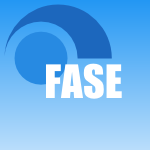 FASE-2009-NarasamdyaP #certification
FASE-2009-NarasamdyaP #certification- Certification of Smart-Card Applications in Common Criteria (IN, MP), pp. 309–324.
 CHI-2009-ConvertinoMRSC #process
CHI-2009-ConvertinoMRSC #process- Supporting content and process common ground in computer-supported teamwork (GC, HMM, MBR, AS, JMC), pp. 2339–2348.
 CHI-2009-KriegerSK #coordination #design
CHI-2009-KriegerSK #coordination #design- Coordinating tasks on the commons: designing for personal goals, expertise and serendipity (MK, EMS, SRK), pp. 1485–1494.
 CHI-2009-YamashitaIKI #multi #using
CHI-2009-YamashitaIKI #multi #using- Difficulties in establishing common ground in multiparty groups using machine translation (NY, RI, HK, TI), pp. 679–688.
 HCD-2009-Shima #comprehension #design #image
HCD-2009-Shima #comprehension #design #image- Common Understanding of Graphic Image Enhance “Emotional Design” (HS), pp. 548–551.
 HCI-AUII-2009-NestlerTK #interactive #interface
HCI-AUII-2009-NestlerTK #interactive #interface- Common Interaction Schemes for In-Vehicle User-Interfaces (SN, MT, GK), pp. 159–168.
 CIKM-2009-WangYPL
CIKM-2009-WangYPL- Minimal common container of tree patterns (JW, JXY, CP, CL), pp. 1409–1412.
 KEOD-2009-Lopez-GarciaMB #design #information management
KEOD-2009-Lopez-GarciaMB #design #information management- Some Common Pitfalls in the Design of Ontology-driven Information Systems (PLG, EM, JB), pp. 468–471.
 SAC-2009-NarasamdyaP #certification
SAC-2009-NarasamdyaP #certification- Certification of smart-card applications in common criteria (IN, MP), pp. 601–608.
 SAC-2009-ZhangCCW #clustering #image #visual notation
SAC-2009-ZhangCCW #clustering #image #visual notation- Revealing common sources of image spam by unsupervised clustering with visual features (CZ, WbC, XC, GW), pp. 891–892.
 CASE-2008-QianK #component #performance #product line
CASE-2008-QianK #component #performance #product line- Supply chain performance with various price-dependent demand functions and component commonality in one product family (LQ, Z(K), pp. 760–765.
 CASE-2008-WengF #algorithm #evolution #problem #scheduling
CASE-2008-WengF #algorithm #evolution #problem #scheduling- Self evolution algorithm for common due date scheduling problem (WW, SF), pp. 790–795.
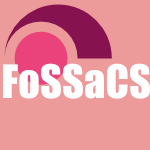 FoSSaCS-2008-Bojanczyk #ltl
FoSSaCS-2008-Bojanczyk #ltl- The Common Fragment of ACTL and LTL (MB), pp. 172–185.
 PASTE-2008-ShonleGL #problem
PASTE-2008-ShonleGL #problem- Addressing common crosscutting problems with Arcum (MS, WGG, SL), pp. 64–69.
 SEFM-2008-GorankoS #distributed #logic #multi
SEFM-2008-GorankoS #distributed #logic #multi- Tableau-Based Decision Procedure for the Multi-agent Epistemic Logic with Operators of Common and Distributed Knowledge (VG, DS), pp. 237–246.
 CHI-2008-ConvertinoMRCSG #process
CHI-2008-ConvertinoMRCSG #process- Articulating common ground in cooperative work: content and process (GC, HMM, MBR, JMC, AS, CHG), pp. 1637–1646.
 CHI-2008-Muller-TomfeldeS #collaboration #difference #multi
CHI-2008-Muller-TomfeldeS #collaboration #difference #multi- Touchers and mousers: commonalities and differences in co-located collaboration with multiple input devices (CMT, CS), pp. 1149–1152.
 ICEIS-HCI-2008-AnacletoPFCF #education #game studies
ICEIS-HCI-2008-AnacletoPFCF #education #game studies- Culture Sensitive Educational Games Considering Common Sense Knowledge (JCAS, ENP, AMF, AFPdC, JF), pp. 136–141.
 ICEIS-J-2008-BoglSPW08a #automation #identification #modelling #semantics
ICEIS-J-2008-BoglSPW08a #automation #identification #modelling #semantics- Semantic Annotation of EPC Models in Engineering Domains to Facilitate an Automated Identification of Common Modelling Practices (AB, MS, GP, NW), pp. 155–171.
 CIKM-2008-AliCKL #documentation #evaluation #retrieval
CIKM-2008-AliCKL #documentation #evaluation #retrieval- Structural relevance: a common basis for the evaluation of structured document retrieval (MSA, MPC, GK, ML), pp. 1153–1162.
 CIKM-2008-ColucciSDT #concept
CIKM-2008-ColucciSDT #concept- Finding informative commonalities in concept collections (SC, EDS, FMD, ET), pp. 807–817.
 ICPR-2008-BenezethJELR #algorithm #bibliography #evaluation
ICPR-2008-BenezethJELR #algorithm #bibliography #evaluation- Review and evaluation of commonly-implemented background subtraction algorithms (YB, PMJ, BE, HL, CR), pp. 1–4.
 SAC-2008-CarvalhoAZ #health #learning #process
SAC-2008-CarvalhoAZ #health #learning #process- Learning activities on health care supported by common sense knowledge (AFPdC, JCAS, SZM), pp. 1385–1389.
 SAC-2008-WeiSWS #email #forensics #identification #mining
SAC-2008-WeiSWS #email #forensics #identification #mining- Mining spam email to identify common origins for forensic application (CW, AS, GW, AS), pp. 1433–1437.
 SPLC-2008-GrulerLS #modelling #product line
SPLC-2008-GrulerLS #modelling #product line- Calculating and Modeling Common Parts of Software Product Lines (AG, ML, KDS), pp. 203–212.
 SPLC-2008-HarhurinH #analysis
SPLC-2008-HarhurinH #analysis- Service-Oriented Commonality Analysis Across Existing Systems (AH, JH), pp. 255–264.
 PPoPP-2008-GregorL #c# #design #framework #implementation
PPoPP-2008-GregorL #c# #design #framework #implementation- Design and implementation of a high-performance MPI for C# and the common language infrastructure (DG, AL), pp. 133–142.
 CSEET-2007-ShoemakerDIM #assurance #comparison #standard
CSEET-2007-ShoemakerDIM #assurance #comparison #standard- A Comparison of the Software Assurance Common Body of Knowledge to Common Curricular Standards (DS, AD, JAI, NRM), pp. 149–156.
 CSMR-2007-Leitao #approach #framework #java #lisp #migration #source code
CSMR-2007-Leitao #approach #framework #java #lisp #migration #source code- Migration of Common Lisp Programs to the Java Platform — The Linj Approach (AML), pp. 243–251.
 CIAA-2007-IliopoulosRVV #problem #sequence #string
CIAA-2007-IliopoulosRVV #problem #sequence #string- The Constrained Longest Common Subsequence Problem for Degenerate Strings (CSI, MSR, MV, LV), pp. 309–311.
 LATA-2007-AntoniouCIP #set #string
LATA-2007-AntoniouCIP #set #string- Application of suffix trees for the acquisition of common motifs with gaps in a set of strings (PA, MC, CSI, PP), pp. 57–66.
 IFM-2007-SinnigCK #case study #modelling #semantics
IFM-2007-SinnigCK #case study #modelling #semantics- Common Semantics for Use Cases and Task Models (DS, PC, FK), pp. 579–598.
 ILC-2007-Frank #constraints #lisp #theorem proving
ILC-2007-Frank #constraints #lisp #theorem proving- Constraint solving in common Lisp (SF), p. 10.
 ILC-2007-Harmon #analysis #lisp #tool support
ILC-2007-Harmon #analysis #lisp #tool support- Computational tools for the analysis of spatial patterns of gene expression in Common Lisp (CLH), p. 18.
 ILC-2007-Herth #lisp #user interface #visual notation
ILC-2007-Herth #lisp #user interface #visual notation- Portable Common Lisp graphical user interfaces with LTk (PH), p. 19.
 ILC-2007-Latendresse #compilation #comprehension #lisp #performance
ILC-2007-Latendresse #compilation #comprehension #lisp #performance- Simple and efficient compilation of list comprehension in common Lisp (ML), p. 12.
 ILC-2007-Rhodes #lisp #sequence
ILC-2007-Rhodes #lisp #sequence- User-extensible sequences in common Lisp (CR), p. 13.
 CHI-2007-TangDSWSL #social
CHI-2007-TangDSWSL #social- Exploring patterns of social commonality among file directories at work (JCT, CD, MS, FW, AES, TAL), pp. 951–960.
 ICEIS-EIS-2007-Sarbo #logic #on the
ICEIS-EIS-2007-Sarbo #logic #on the- On the Logic Underlying Common Sense (JJS), pp. 395–400.
 ICEIS-SAIC-2007-KusterTZKCVBCFT #comparative #evaluation
ICEIS-SAIC-2007-KusterTZKCVBCFT #comparative #evaluation- Service Discovery with SWE-ET and DIANE — A Comparative Evaluation by Means of Solutions to a Common Scenario (UK, AT, MZ, BKR, DC, EDV, MB, SC, FMF, CT), pp. 430–437.
 MLDM-2007-HanKK #performance #sequence #using
MLDM-2007-HanKK #performance #sequence #using- Efficient Subsequence Matching Using the Longest Common Subsequence with a Dual Match Index (TSH, SKK, JK), pp. 585–600.
 MLDM-2007-ShidaraNK #classification #consistency #named
MLDM-2007-ShidaraNK #classification #consistency #named- CCIC: Consistent Common Itemsets Classifier (YS, AN, MK), pp. 490–498.
 SEKE-2007-YuSC #kernel #reuse
SEKE-2007-YuSC #kernel #reuse- Common Coupling as a Measure of Reuse Effort in Kernel-Based Software (LY, SRS, KC), pp. 39–44.
 SIGIR-2007-DowneyDH #query #web
SIGIR-2007-DowneyDH #query #web- Heads and tails: studies of web search with common and rare queries (DD, STD, EH), pp. 847–848.
 SAC-2007-MorimotoSGC #security #specification #verification
SAC-2007-MorimotoSGC #security #specification #verification- Formal verification of security specifications with common criteria (SM, SS, YG, JC), pp. 1506–1512.
 CASE-2006-LuL #evaluation #independence #reliability #safety
CASE-2006-LuL #evaluation #independence #reliability #safety- Reliability evaluation of standby safety systems due to independent and common cause failures (LL, GL), pp. 264–269.
 DocEng-2006-LeveringC #html #web
DocEng-2006-LeveringC #html #web- The portrait of a common HTML web page (RL, MC), pp. 198–204.
 ESOP-2006-Fruja #dot-net #runtime #type safety
ESOP-2006-Fruja #dot-net #runtime #type safety- Type Safety of Generics for the .NET Common Language Runtime (NGF), pp. 325–341.
 WCRE-2006-MarinMD #framework #mining
WCRE-2006-MarinMD #framework #mining- A common framework for aspect mining based on crosscutting concern sorts (MM, LM, AvD), pp. 29–38.
 CIAA-2006-AntoniouHIMP #automaton #finite #using
CIAA-2006-AntoniouHIMP #automaton #finite #using- Finding Common Motifs with Gaps Using Finite Automata (PA, JH, CSI, BM, PP), pp. 69–77.
 CHI-2006-AhnKB #game studies #named
CHI-2006-AhnKB #game studies #named- Verbosity: a game for collecting common-sense facts (LvA, MK, MB), pp. 75–78.
 CSCW-2006-RollandHM #concept #integration
CSCW-2006-RollandHM #concept #integration- Conceptualizing common information spaces across heterogeneous contexts: mutable mobiles and side-effects of integration (KHR, VH, EM), pp. 493–500.
 ECIR-2006-ChangP #performance #query
ECIR-2006-ChangP #performance #query- Efficient Phrase Querying with Common Phrase Index (MC, CKP), pp. 61–71.
 ICPR-v1-2006-IshiyamaIS
ICPR-v1-2006-IshiyamaIS- A Compact Model of Human Postures Extracting Common Motion from Individual Samples (RI, HI, SS), pp. 187–190.
 HPCA-2006-ChungCMMCKO #behaviour #parallel #source code #thread #transaction
HPCA-2006-ChungCMMCKO #behaviour #parallel #source code #thread #transaction- The common case transactional behavior of multithreaded programs (JC, HC, CCM, AM, BDC, CK, KO), pp. 266–277.
 PPoPP-2006-JoinerGMP #education #parallel
PPoPP-2006-JoinerGMP #education #parallel- Teaching parallel computing to science faculty: best practices and common pitfalls (DAJ, PG, TM, CP), pp. 239–246.
 DATE-2005-VandersteenLJRP #framework #modelling #scalability
DATE-2005-VandersteenLJRP #framework #modelling #scalability- Estimating Scalable Common-Denominator Laplace-Domain MIMO Models in an Errors-in-Variables Framework (GV, LDL, SJ, YR, RP), pp. 1076–1081.
 IWPC-2005-BeyerN #clustering
IWPC-2005-BeyerN #clustering- Clustering Software Artifacts Based on Frequent Common Changes (DB, AN), pp. 259–268.
 CHI-2005-BirnholtzFHB #ad hoc #chat #distributed #lightweight #scalability
CHI-2005-BirnholtzFHB #ad hoc #chat #distributed #lightweight #scalability- Grounding needs: achieving common ground via lightweight chat in large, distributed, ad-hoc groups (JPB, TAF, DBH, SJB), pp. 21–30.
 EDOC-2005-PoernomoJS #constraints #distributed #probability
EDOC-2005-PoernomoJS #constraints #distributed #probability- Timed Probabilistic Constraints over the Distributed Management Taskforce Common Information Model (IP, JJ, HWS), pp. 261–272.
 RE-2005-LiaskosLWYE #approach #configuration management
RE-2005-LiaskosLWYE #approach #configuration management- Configuring Common Personal Software: a Requirements-Driven Approach (SL, AL, YW, YY, SME), pp. 9–18.
 ESEC-FSE-2005-LivshitsZ #fault #mining #named
ESEC-FSE-2005-LivshitsZ #fault #mining #named- DynaMine: finding common error patterns by mining software revision histories (VBL, TZ), pp. 296–305.
 DATE-2005-FalconeriNR04 #modelling #reuse #verification
DATE-2005-FalconeriNR04 #modelling #reuse #verification- Common Reusable Verification Environment for BCA and RTL Models (GF, WN, NR), pp. 272–277.
 ITiCSE-2004-PriceP #programming
ITiCSE-2004-PriceP #programming- Common environment for undergraduate computer programming (CBP, JP), p. 248.
 ICALP-2004-Hofmann #logic #question #type system #what
ICALP-2004-Hofmann #logic #question #type system #what- What Do Program Logics and Type Systems Have in Common? (MH0), pp. 4–7.
 ICPR-v1-2004-CevikalpW #recognition #using
ICPR-v1-2004-CevikalpW #recognition #using- Face Recognition by Using Discriminative Common Vectors (HC, DMW), pp. 326–329.
 SEKE-2004-SmithC #analysis #generative #requirements
SEKE-2004-SmithC #analysis #generative #requirements- Commonality and Requirements Analysis for Mesh Generating Software (SS, CHC), pp. 384–387.
 POPL-2004-YuKS #dot-net #formal method #runtime
POPL-2004-YuKS #dot-net #formal method #runtime- Formalization of generics for the .NET common language runtime (DY, AK, DS), pp. 39–51.
 HT-2003-BarraMS #adaptation #web
HT-2003-BarraMS #adaptation #web- “Common” web paths in a group adaptive system (MB, DM, VS), pp. 218–219.
 CIAA-2003-MelicharP #approach #automaton #finite #problem #sequence
CIAA-2003-MelicharP #approach #automaton #finite #problem #sequence- The Longest Common Subsequence Problem A Finite Automata Approach (BM, TP), pp. 294–296.
 AGTIVE-2003-Bohlen #graph #modelling
AGTIVE-2003-Bohlen #graph #modelling- Specific Graph Models and Their Mappings to a Common Model (BB), pp. 45–60.
 DATE-2002-DessoukyS #array #automation #generative
DATE-2002-DessoukyS #array #automation #generative- Automatic Generation of Common-Centroid Capacitor Arrays with Arbitrary Capacitor Ratio (MD, DS), pp. 576–580.
 DATE-2002-PomeranzRR #debugging #fault
DATE-2002-PomeranzRR #debugging #fault- Finding a Common Fault Response for Diagnosis during Silicon Debug (IP, JR, SMR), p. 1116.
 ICSM-2002-Sneed #object-oriented #repository
ICSM-2002-Sneed #object-oriented #repository- Transforming Procedural Program Structures to Object-Oriented Class Structures for the Purpose of Populating a Common Software Repository (HMS), p. 286.
 CIAA-2002-Tronicek #automaton #sequence
CIAA-2002-Tronicek #automaton #sequence- Common Subsequence Automaton (ZT), pp. 270–275.
 CSCW-2002-Bossen #parametricity
CSCW-2002-Bossen #parametricity- The parameters of common information spaces: : the heterogeneity of cooperative work at a hospital ward (CB), pp. 176–185.
 ICEIS-2002-Olive #concept #modelling
ICEIS-2002-Olive #concept #modelling- Specific Relationship Types in Conceptual Modeling: The Cases of Generic and with Common Participants (AO), p. 9.
 FSE-2002-VetterlingWW #development
FSE-2002-VetterlingWW #development- Secure systems development based on the common criteria: the PalME project (MV, GW, AKW), pp. 129–138.
 ITiCSE-2001-AzadeganL #implementation
ITiCSE-2001-AzadeganL #implementation- An international common project: implementation phase (SA, CL), pp. 125–128.
 PLDI-2001-KennedyS #design #dot-net #implementation #runtime
PLDI-2001-KennedyS #design #dot-net #implementation #runtime- Design and Implementation of Generics for the .NET Common Language Runtime (AK, DS), pp. 1–12.
 ICALP-2001-LinCJW #problem #sequence
ICALP-2001-LinCJW #problem #sequence- The Longest Common Subsequence Problem for Sequences with Nested Arc Annotations (GHL, ZZC, TJ, JW), pp. 444–455.
 ICEIS-v2-2001-PetersH
ICEIS-v2-2001-PetersH- Introducing Common Systems in International Financial Firms (SCAP, MSHH), pp. 859–863.
 CIKM-2001-FerroRG #approximate
CIKM-2001-FerroRG #approximate- Approximately Common Patterns in Shared-Forests (MVF, FJR, JGG), pp. 73–80.
 SAC-2001-BaroneBVM #algorithm #analysis #approximate #problem
SAC-2001-BaroneBVM #algorithm #analysis #approximate #problem- An approximation algorithm for the shortest common supersequence problem: an experimental analysis (PB, PB, GDV, GM), pp. 56–60.
 DATE-2000-SchwenckerSGA #automation #bound #design
DATE-2000-SchwenckerSGA #automation #bound #design- The Generalized Boundary Curve-A Common Method for Automatic Nominal Design and Design Centering of Analog Circuits (RS, FS, HEG, KA), pp. 42–47.
 DATE-2000-TangWT #evaluation #performance #sequence
DATE-2000-TangWT #evaluation #performance #sequence- Fast Evaluation of Sequence Pair in Block Placement by Longest Common Subsequence Computation (XT, DFW, RT), pp. 106–111.
 VLDB-2000-CotterB #community #framework
VLDB-2000-CotterB #community #framework- Biodiversity Informatics Infrastructure: An Information Commons for the Biodiversity Community (GAC, BTB), pp. 701–704.
 CSCW-2000-GreenspanGWB #communication #trust
CSCW-2000-GreenspanGWB #communication #trust- Interpersonal trust and common ground in electronically mediated communication (SG, DG, DMW, AB), pp. 251–260.
 ICSE-2000-BriandLW #assessment #comparison #cost analysis #modelling
ICSE-2000-BriandLW #assessment #comparison #cost analysis #modelling- A replicated assessment and comparison of common software cost modeling techniques (LCB, TL, IW), pp. 377–386.
 DAC-1999-LakshminarayanaRKJD #optimisation #performance
DAC-1999-LakshminarayanaRKJD #optimisation #performance- Common-Case Computation: A High-Level Technique for Power and Performance Optimization (GL, AR, KSK, NKJ, SD), pp. 56–61.
 ICSM-1999-Kajko-Mattsson99a #concept #maintenance
ICSM-1999-Kajko-Mattsson99a #concept #maintenance- Common Concept Apparatus Within Corrective Software Maintenance (MKM), pp. 287–296.
 IFM-1999-He #framework #hardware
IFM-1999-He #framework #hardware- A Common Framework for Mixed Hardware/Software Systems (JH), pp. 3–25.
 CHI-1999-VeinottOOF #video
CHI-1999-VeinottOOF #video- Video Helps Remote Work: Speakers Who Need to Negotiate Common Ground Benefit from Seeing Each Other (ESV, JSO, GMO, XF), pp. 302–309.
 HCI-EI-1999-Davies99b #comprehension #generative #process #programming
HCI-EI-1999-Davies99b #comprehension #generative #process #programming- Expertise in computer programming: Exploring commonalities between code comprehension and generation activities (SPD), pp. 1273–1277.
 ICSE-1999-ArdisC #analysis #product line
ICSE-1999-ArdisC #analysis #product line- Defining Families — Commonality Analysis (MAA, DAC), pp. 671–672.
 ICSE-1999-BriandESWM #assessment #comparison #estimation #modelling
ICSE-1999-BriandESWM #assessment #comparison #estimation #modelling- An Assessment and Comparison of Common Software Cost Estimation Modeling Techniques (LCB, KEE, DS, IW, KM), pp. 313–322.
 ICSE-1999-OssherT #development #evolution #object-oriented #problem #programming #using
ICSE-1999-OssherT #development #evolution #object-oriented #problem #programming #using- Using Subject-Oriented Programming to Overcome Common Problems in Object-Oriented Software Development/Evolution (HO, PLT), pp. 687–688.
 HPDC-1999-ArmstrongGGKKMPS #architecture #component #towards
HPDC-1999-ArmstrongGGKKMPS #architecture #component #towards- Toward a Common Component Architecture for High-Performance Scientific Computing (RCA, DG, AG, KK, SRK, LCM, SRP, BAS), pp. 115–124.
 LICS-1999-HalpernS #infinity #reasoning
LICS-1999-HalpernS #infinity #reasoning- Reasoning about Common Knowledge with Infinitely Many Agents (JYH, RAS), pp. 384–393.
 SIGMOD-1998-Cohen #database #integration #query #semistructured data #similarity #using
SIGMOD-1998-Cohen #database #integration #query #semistructured data #similarity #using- Integration of Heterogeneous Databases Without Common Domains Using Queries Based on Textual Similarity (WWC), pp. 201–212.
 STOC-1998-BuchsbaumKRW #algorithm #linear #verification
STOC-1998-BuchsbaumKRW #algorithm #linear #verification- Linear-Time Pointer-Machine Algorithms for Least Common Ancestors, MST Verification, and Dominators (ALB, HK, AR, JW), pp. 279–288.
 ICPR-1998-ShearerVB #algorithm #performance #video
ICPR-1998-ShearerVB #algorithm #performance #video- An efficient least common subgraph algorithm for video indexing (KS, SV, HB), pp. 1241–1243.
 POPL-1998-JonesSLT #haskell #ml
POPL-1998-JonesSLT #haskell #ml- Bridging the Gulf: A Common Intermediate Language for ML and Haskell (SLPJ, MS, JL, APT), pp. 49–61.
 IFL-1997-Chitil #functional #lazy evaluation
IFL-1997-Chitil #functional #lazy evaluation- Common Subexpressions Are Uncommon in Lazy Functional Languages (OC), pp. 53–71.
 HCI-CC-1997-Bannon
HCI-CC-1997-Bannon- The Role of Common Information Spaces in CSCW (LJB), pp. 317–320.
 HCI-CC-1997-Vanderheiden97a #architecture #interface
HCI-CC-1997-Vanderheiden97a #architecture #interface- Use of a Common Table Architecture for Creating Hands Free, Eyes Free, Noisy Environment (Flex-Modal, Flex-Input) Interfaces (GCV), pp. 449–452.
 HCI-SEC-1997-TanakaKN #email #prototype
HCI-SEC-1997-TanakaKN #email #prototype- Prototyping of Digital Ink E-Mail System Based on a Common Ink Format (HT, NK, MN), pp. 435–438.
 ICSE-1997-ArdisW #analysis #product line #tutorial
ICSE-1997-ArdisW #analysis #product line #tutorial- Defining Families: The Commonality Analysis (Tutorial) (MAA, DMW), pp. 649–650.
 CHI-1996-Druin #named
CHI-1996-Druin #named- CHIkids: A Common Ground for Kids and Adults (AD), pp. 506–507.
 KR-1996-Ginsberg96a #question
KR-1996-Ginsberg96a #question- Do Computers Need Common Sense? (MLG), pp. 620–626.
 VLDB-1995-Lindsay
VLDB-1995-Lindsay- DB2 Common Server: Technology, Progress, & Directions (BGL0), pp. 694–695.
 SIGMOD-1994-Martin #named #specification
SIGMOD-1994-Martin #named #specification- COSS: The Common Object Services Specifications (BEM), p. 479.
 ICALP-1994-JiangL #approximate #on the #sequence
ICALP-1994-JiangL #approximate #on the #sequence- On the Approximation of Shortest Common Supersequences and Longest Common Subsequences (TJ, ML), pp. 191–202.
 LFP-1994-JacobsS #lisp #persistent #semantics #syntax
LFP-1994-JacobsS #lisp #persistent #semantics #syntax- Syntax and Semantics of a Persistent Common Lisp (JHJ, MRS), pp. 103–112.
 CAiSE-1994-JarzabekT #modelling #multi #re-engineering #reuse
CAiSE-1994-JarzabekT #modelling #multi #re-engineering #reuse- Modeling Multiple Views of Common Features in Software Reengineering for Reuse (SJ, CLT), pp. 269–282.
 KBSE-1993-MacMillanFLLS #architecture #natural language #reuse #tool support
KBSE-1993-MacMillanFLLS #architecture #natural language #reuse #tool support- A Common Architecture to Encourage Reuse of Natural Language/Text Processing Tools (TRM, MF, SL, EPL, LJS), p. 20.
 FME-1993-DoumencM #automaton #execution #parallel
FME-1993-DoumencM #automaton #execution #parallel- The Parallel Abstract Machine: A Common Execution Model for FDTs (GD, JFM), pp. 285–293.
 HCI-ACS-1993-Steinmuller #framework
HCI-ACS-1993-Steinmuller #framework- JESSI Common Framework JCF — An Open Framework for Integrated CAx-Environments (BS), pp. 337–342.
 HCI-SHI-1993-Tullis #design #question #user interface
HCI-SHI-1993-Tullis #design #question #user interface- Is User Interface Design Just Common Sense? (TST), pp. 9–14.
 INTERCHI-1993-Farrand #user interface #visual notation
INTERCHI-1993-Farrand #user interface #visual notation- Common elements in today’s graphical user interfaces: the good, the bad, and the ugly (ABF), pp. 470–473.
 SEKE-1993-MacMillanFLLS #architecture #natural language #reuse #tool support
SEKE-1993-MacMillanFLLS #architecture #natural language #reuse #tool support- A Common Architecture To Encourage Reuse Of Natural Language/Text Processing Tools (TRM, MLF, SJL, EPL, LJS), pp. 266–270.
 SAC-1993-ONeal #complexity #empirical #metric
SAC-1993-ONeal #complexity #empirical #metric- An Empirical Study of Three Common Software Complexity Measures (MBO), pp. 203–207.
 LFP-1992-Henessey #lisp #named #performance
LFP-1992-Henessey #lisp #named #performance- WCL: Delivering Efficient Common Lisp Applications Under Unix (WH), pp. 260–269.
 LFP-1992-MacLachlan #compilation #lisp #python
LFP-1992-MacLachlan #compilation #lisp #python- The Python Compiler for CMU Common Lisp (RAM), pp. 235–246.
 LFP-1992-NagasakaSIGT #implementation #lisp #performance
LFP-1992-NagasakaSIGT #implementation #lisp #performance- Tachyon Common Lisp: An Efficient and Portable Implementation of CLtL2 (AN, YS, TI, HG, JT), pp. 270–277.
 IWMM-1992-Yuasa #architecture #garbage collection #lisp #memory management #parallel
IWMM-1992-Yuasa #architecture #garbage collection #lisp #memory management #parallel- Memory Management and Garbage Collection of an Extended Common Lisp System for Massively Parallel SIMD Architecture (TY), pp. 490–506.
 SIGMOD-1991-Lenat
SIGMOD-1991-Lenat- Computers versus Common Sense (DBL), p. 1.
 CHI-1991-McCarthyMM #case study #communication
CHI-1991-McCarthyMM #case study #communication- An experimental study of common ground in text-based communication (JCM, VCM, AFM), pp. 209–215.
 KR-1991-Gruber #knowledge base #ontology #reuse
KR-1991-Gruber #knowledge base #ontology #reuse- The Role of Common Ontology in Achieving Sharable, Reusable Knowledge Bases (TRG), pp. 601–602.
 SIGIR-1991-FowlerFW #documentation #query #representation #visual notation
SIGIR-1991-FowlerFW #documentation #query #representation #visual notation- Integrating Query, Thesaurus, and Documents Through a Common Visual Representation (RHF, WALF, BAW), pp. 142–151.
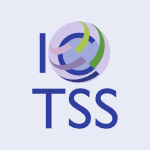 IWPTS-1991-CorbiS #embedded #protocol #testing
IWPTS-1991-CorbiS #embedded #protocol #testing- Common Abstract Test Suite for the Connection Oriented Presentation Protocol Embedded Under Different Application Contexts (CC, GS), pp. 143–149.
 ICALP-1990-FlajoletSS #problem
ICALP-1990-FlajoletSS #problem- Analytic Variations on the Common Subexpression Problem (PF, PS, JMS), pp. 220–234.
 CAiSE-1990-Engeman #development #integration #repository #tool support
CAiSE-1990-Engeman #development #integration #repository #tool support- A Common Repository and Information Model — A Base for Integration of Development Tools (CE), p. 4.
 SEKE-1990-Maim #named #representation
SEKE-1990-Maim #named #representation- CRL: Common Representation Language (EM), pp. 209–215.
 KR-1989-Zadrozny #order #set
KR-1989-Zadrozny #order #set- Cardinalities and Well Orderings in a Common-Sense Set Theory (WZ), pp. 486–497.
 SOSP-1989-WeiserDH #approach #runtime
SOSP-1989-WeiserDH #approach #runtime- The Portable Common Runtime Approach to Interoperability (MW, AJD, CH), pp. 114–122.
 LFP-1988-BobrowK #kernel #lisp #object-oriented
LFP-1988-BobrowK #kernel #lisp #object-oriented- The Common Lisp Object System Metaobject Kernel: A Status Report (DGB, GK), pp. 309–315.
 ICSE-1988-Narayanaswamy #evolution #framework #lisp #static analysis
ICSE-1988-Narayanaswamy #evolution #framework #lisp #static analysis- Static Analysis-Based Program Evolution Support in the Common Lisp Framework (KN), pp. 222–230.
 DAC-1987-Parks #analysis #design #named #tutorial
DAC-1987-Parks #analysis #design #named #tutorial- Tutorial: Reading and Reviewing the Common Schema for Electrical Design and Analysis (CHP), pp. 479–483.
 ICALP-1987-Tsakalidis
ICALP-1987-Tsakalidis- The Nearest Common Ancestor in a Dynamic Tree (AKT), pp. 489–498.
 ECOOP-1987-DeMichielG #bibliography #lisp #object-oriented #perspective
ECOOP-1987-DeMichielG #bibliography #lisp #object-oriented #perspective- The Common Lisp Object System: An Overview (LGD, RPG), pp. 151–170.
 OOPSLA-1987-KempfHDS #experience
OOPSLA-1987-KempfHDS #experience- Experience with CommonLoops (JK, WH, RD, AS), pp. 214–226.
 LICS-1987-Emden #first-order #functional #logic #programming #relational
LICS-1987-Emden #first-order #functional #logic #programming #relational- First-order Predicate Logic as a Common Basis for Relational and Functional Programming (Abstract) (MHvE), p. 179.
 LFP-1986-BrooksPMWBG #compilation #design #lisp #optimisation
LFP-1986-BrooksPMWBG #compilation #design #lisp #optimisation- Design of an Optimizing, Dynamically Retargetable Compiler for Common Lisp (RAB, DBP, JLM, JLW, EB, RPG), pp. 67–87.
 SIGIR-1986-Thurmair #architecture #information retrieval
SIGIR-1986-Thurmair #architecture #information retrieval- A Common Architecture for Different Text Processing Techniques in an Information Retrieval Environment (GT), pp. 138–143.
 OOPSLA-1986-BobrowKKMSZ #lisp #named #object-oriented #programming
OOPSLA-1986-BobrowKKMSZ #lisp #named #object-oriented #programming- CommonLoops: Merging Lisp and Object-Oriented Programming (DGB, KMK, GK, LM, MS, FZ), pp. 17–29.
 STOC-1985-Kaltofen #source code
STOC-1985-Kaltofen #source code- Computing with Polynomials Given by Straight-Line Programs I: Greatest Common Divisors (EK), pp. 131–142.
 LFP-1984-BrooksG #lisp
LFP-1984-BrooksG #lisp- A Critique of Common Lisp (RAB, RPG), pp. 1–8.
 LFP-1984-WholeyF #design #lisp #set
LFP-1984-WholeyF #design #lisp #set- The Design of an Instruction Set for Common Lisp (SW, SEF), pp. 150–158.
 SIGMOD-1983-Stonebraker #question
SIGMOD-1983-Stonebraker #question- DBMS and AI: Is There any Common Point of View? (MS), p. 134.
 SIGMOD-1982-Finkelstein #analysis #database
SIGMOD-1982-Finkelstein #analysis #database- Common Subexpression Analysis in Database Applications (SJF), pp. 235–245.
 LFP-1982-BrooksGS #implementation #lisp
LFP-1982-BrooksGS #implementation #lisp- S-1 Common Lisp Implementation (RAB, RPG, GLSJ), pp. 108–113.
 LFP-1982-Steele #bibliography #lisp
LFP-1982-Steele #bibliography #lisp- An Overview of Common Lisp (GLSJ), pp. 98–107.
 ICSE-1982-Ling #design #diagrams #source code #using
ICSE-1982-Ling #design #diagrams #source code #using- Designing Data Entry Programs Using State Diagram as a Common Model (MML), pp. 296–308.
 STOC-1979-Angluin #set #string
STOC-1979-Angluin #set #string- Finding Patterns Common to a Set of Strings (Extended Abstract) (DA), pp. 130–141.
 POPL-1978-German #automation #fault #proving #runtime
POPL-1978-German #automation #fault #proving #runtime- Automating Proofs of the Absence of Common Runtime Errors (SMG), pp. 105–118.
 POPL-1978-PrabhalaS #performance
POPL-1978-PrabhalaS #performance- Efficient Computation of Expressions with Common Subexpressions (BP, RS), pp. 222–230.
 ICSE-1978-Fisher #design #higher-order #interactive #requirements
ICSE-1978-Fisher #design #higher-order #interactive #requirements- The Interaction Between the Preliminary Designs and the Technical Requirements for the DoD Common High Order Language (DAF), pp. 82–83.
 POPL-1977-Fong
POPL-1977-Fong- Generalized Common Subexpressions in Very High Level Languages (ACF), pp. 48–57.
 DAC-1976-AzemaVD #design #hardware #petri net #simulation #verification
DAC-1976-AzemaVD #design #hardware #petri net #simulation #verification- Petri nets as a common tool for design verification and hardware simulation (PA, RV, MD), pp. 109–116.
 DAC-1976-GoldsteinL #optimisation
DAC-1976-GoldsteinL #optimisation- Common feature techniques for discrete optimization (AJG, ABL), pp. 232–244.
 DIPL-1976-Fisher #programming language
DIPL-1976-Fisher #programming language- The Common Programming Language Effort of the Department of Defense (DF), pp. 1–6.
 POPL-1976-AhoJU #code generation
POPL-1976-AhoJU #code generation- Code Generation for Expressions with Common Subexpressions (AVA, SCJ, JDU), pp. 19–31.
 STOC-1973-AhoHU #on the
STOC-1973-AhoHU #on the- On Finding Lowest Common Ancestors in Trees (AVA, JEH, JDU), pp. 253–265.
 DATE-2015-FuZLX #manycore #memory management
DATE-2015-FuZLX #manycore #memory management VLDB-2015-El-HelwRSCGP #database #optimisation
VLDB-2015-El-HelwRSCGP #database #optimisation MSR-2015-HonselHG #evaluation #stack overflow
MSR-2015-HonselHG #evaluation #stack overflow SANER-2015-AlawnehHH #analysis #metamodelling #performance #towards
SANER-2015-AlawnehHH #analysis #metamodelling #performance #towards CHI-2015-PandeyRSNB #analysis #empirical #how #visualisation
CHI-2015-PandeyRSNB #analysis #empirical #how #visualisation ICEIS-v1-2015-AwasthiLK #algorithm #linear #problem #sequence #strict
ICEIS-v1-2015-AwasthiLK #algorithm #linear #problem #sequence #strict KDD-2015-KimCKRP #matrix #topic
KDD-2015-KimCKRP #matrix #topic SIGIR-2015-HarelY #clustering #identification #query
SIGIR-2015-HarelY #clustering #identification #query POPL-2015-Buneman #database #programming #question
POPL-2015-Buneman #database #programming #question POPL-2015-VafeiadisBCMN #compilation #memory management #optimisation #what
POPL-2015-VafeiadisBCMN #compilation #memory management #optimisation #what ICSE-v1-2015-DeweyNH #automation #data type #generative
ICSE-v1-2015-DeweyNH #automation #data type #generative SPLC-2015-FontBHC #automation #formal method #product line #variability
SPLC-2015-FontBHC #automation #formal method #product line #variability HPCA-2015-LeeKPKSCM #adaptation #optimisation
HPCA-2015-LeeKPKSCM #adaptation #optimisation CBSE-2014-HorcasPF #architecture #injection #quality #variability
CBSE-2014-HorcasPF #architecture #injection #quality #variability DAC-2014-LinWC #data mining #design #logic #mining #named #power management #synthesis
DAC-2014-LinWC #data mining #design #logic #mining #named #power management #synthesis HT-2014-SharmaSS #process #social #twitter
HT-2014-SharmaSS #process #social #twitter ESOP-2014-Fu #abstraction #analysis #memory management
ESOP-2014-Fu #abstraction #analysis #memory management ICSME-2014-LinXPL0ZD #maintenance #named
ICSME-2014-LinXPL0ZD #maintenance #named ILC-2014-Cooper #knowledge base #lisp
ILC-2014-Cooper #knowledge base #lisp ILC-2014-Smith #lisp #programming
ILC-2014-Smith #lisp #programming ILC-2014-SmithP #finite #lisp #performance #permutation
ILC-2014-SmithP #finite #lisp #performance #permutation ILC-2014-Strandh #lisp #performance
ILC-2014-Strandh #lisp #performance CHI-2014-MurerJSS #comprehension
CHI-2014-MurerJSS #comprehension DHM-2014-IkenoboKKTG #classification
DHM-2014-IkenoboKKTG #classification DUXU-DI-2014-AderholdWCJGK #3d #framework #implementation #novel #towards #web
DUXU-DI-2014-AderholdWCJGK #3d #framework #implementation #novel #towards #web DUXU-TMT-2014-MasipOG #evaluation #heuristic #industrial #user interface
DUXU-TMT-2014-MasipOG #evaluation #heuristic #industrial #user interface LCT-TRE-2014-SofticVMWE #research #using
LCT-TRE-2014-SofticVMWE #research #using ICML-c2-2014-WuCLY #behaviour #consistency #learning #network #predict #social
ICML-c2-2014-WuCLY #behaviour #consistency #learning #network #predict #social ICPR-2014-LuZXGW #approximate #morphism #quantum
ICPR-2014-LuZXGW #approximate #morphism #quantum ECMFA-2014-MartinezZKT #identification #variability #visualisation
ECMFA-2014-MartinezZKT #identification #variability #visualisation SAC-2014-LiMZ #using #visualisation
SAC-2014-LiMZ #using #visualisation SPLC-2014-KodamaSTKT #case study #experience
SPLC-2014-KodamaSTKT #case study #experience LATA-2013-Blanchet-SadriL #problem #word
LATA-2013-Blanchet-SadriL #problem #word CSCW-2013-WangFC #idea
CSCW-2013-WangFC #idea DUXU-CXC-2013-WilkosinskaAGJ #framework #implementation #online #towards
DUXU-CXC-2013-WilkosinskaAGJ #framework #implementation #online #towards HCI-AMTE-2013-Bevan #documentation #industrial #using
HCI-AMTE-2013-Bevan #documentation #industrial #using HCI-IMT-2013-Farhadi-NiakiEA #analysis #design #gesture #usability
HCI-IMT-2013-Farhadi-NiakiEA #analysis #design #gesture #usability HCI-UC-2013-Kampf #configuration management #design #mobile #online
HCI-UC-2013-Kampf #configuration management #design #mobile #online HIMI-HSM-2013-ZiccardiRORMBSCVS
HIMI-HSM-2013-ZiccardiRORMBSCVS HIMI-LCCB-2013-ToumotoHH #development #evaluation #mobile
HIMI-LCCB-2013-ToumotoHH #development #evaluation #mobile MLDM-2013-LiM #community #mining #network #topic
MLDM-2013-LiM #community #mining #network #topic SEKE-2013-DoranGD #comprehension #online #social #social media
SEKE-2013-DoranGD #comprehension #online #social #social media SEKE-2013-SilvaVMA #approach #product line
SEKE-2013-SilvaVMA #approach #product line SAC-2013-BeckersFHHC #development
SAC-2013-BeckersFHHC #development SAC-2013-DelahayeKS #c #dynamic analysis #source code #specification
SAC-2013-DelahayeKS #c #dynamic analysis #source code #specification SPLC-2013-FerrariSd #documentation #mining #natural language
SPLC-2013-FerrariSd #documentation #mining #natural language SPLC-2013-HaugenWC #named #variability
SPLC-2013-HaugenWC #named #variability HPCA-2013-ZebchukCTSM #named
HPCA-2013-ZebchukCTSM #named PPoPP-2013-DeoK #array #gpu #parallel
PPoPP-2013-DeoK #array #gpu #parallel ICST-2013-DadeauCLTVBT #evaluation #generative #testing
ICST-2013-DadeauCLTVBT #evaluation #generative #testing ASE-2012-SharT #predict #validation #web
ASE-2012-SharT #predict #validation #web CASE-2012-ChenF #analysis #rule-based
CASE-2012-ChenF #analysis #rule-based CASE-2012-SintovRMS #algorithm #set
CASE-2012-SintovRMS #algorithm #set DATE-2012-ZhaoYZCL #architecture #array #memory management
DATE-2012-ZhaoYZCL #architecture #array #memory management HT-2012-LimD #community #detection #twitter
HT-2012-LimD #community #detection #twitter LATA-2012-BilleGK
LATA-2012-BilleGK CHI-2012-HietanenSAL #image
CHI-2012-HietanenSAL #image CHI-2012-KimCZT #concurrent
CHI-2012-KimCZT #concurrent ICEIS-J-2012-AmarGMHLN12a #automation #concept analysis
ICEIS-J-2012-AmarGMHLN12a #automation #concept analysis ICEIS-v1-2012-AmarGMHLN #concept analysis #using
ICEIS-v1-2012-AmarGMHLN #concept analysis #using CIKM-2012-LiuCBLR #graph #mining
CIKM-2012-LiuCBLR #graph #mining ICPR-2012-ErYAK #analysis #modelling
ICPR-2012-ErYAK #analysis #modelling ICPR-2012-KongW #clustering #learning #multi
ICPR-2012-KongW #clustering #learning #multi KMIS-2012-DurantiX #development #information management
KMIS-2012-DurantiX #development #information management KMIS-2012-RakthinCC #effectiveness
KMIS-2012-RakthinCC #effectiveness SAC-2012-ChenNX #collaboration #recommendation
SAC-2012-ChenNX #collaboration #recommendation SAC-2012-SeelandBKP
SAC-2012-SeelandBKP SLE-2012-GuizzardiZ #concept #modelling
SLE-2012-GuizzardiZ #concept #modelling HPDC-2012-LuckowSWMMJ #towards
HPDC-2012-LuckowSWMMJ #towards ICLP-J-2012-AreiasR #concurrent #multi #thread #towards #using
ICLP-J-2012-AreiasR #concurrent #multi #thread #towards #using ICST-2012-SegallTZ12a #combinator #modelling
ICST-2012-SegallTZ12a #combinator #modelling DAC-2011-LinLCHC #random
DAC-2011-LinLCHC #random DocEng-2011-GippM #algorithm #detection #pattern matching #sequence
DocEng-2011-GippM #algorithm #detection #pattern matching #sequence DUXU-v1-2011-Renner #design #how #image #process #question #visual notation
DUXU-v1-2011-Renner #design #how #image #process #question #visual notation IDGD-2011-Yang11a #communication
IDGD-2011-Yang11a #communication AdaEurope-2011-Rodriguez-LopezG #abstraction #architecture #middleware #paradigm
AdaEurope-2011-Rodriguez-LopezG #abstraction #architecture #middleware #paradigm ICEIS-v4-2011-MiaoG #integration
ICEIS-v4-2011-MiaoG #integration CIKM-2011-LinTC #classification #independence #sentiment #using #word
CIKM-2011-LinTC #classification #independence #sentiment #using #word KDD-2011-WangBB #analysis #component #matrix #multi
KDD-2011-WangBB #analysis #component #matrix #multi KMIS-2011-SchwittekSEH #towards
KMIS-2011-SchwittekSEH #towards SEKE-2011-PratAC #modelling
SEKE-2011-PratAC #modelling SAC-2011-Fournier-VigerNT #mining #named #sequence
SAC-2011-Fournier-VigerNT #mining #named #sequence SAC-2011-WajidMNG #comprehension #documentation #enterprise #tool support
SAC-2011-WajidMNG #comprehension #documentation #enterprise #tool support PLEASE-2011-ChastekDM #analysis #variability
PLEASE-2011-ChastekDM #analysis #variability ICST-2011-FraserZ #generative #testing
ICST-2011-FraserZ #generative #testing CASE-2010-GujarathiM #generative #integration #using
CASE-2010-GujarathiM #generative #integration #using DocEng-2010-Hassan #algorithm #evaluation #recognition #towards
DocEng-2010-Hassan #algorithm #evaluation #recognition #towards CSMR-2010-KnieselBHFCGT #design pattern #detection #tool support
CSMR-2010-KnieselBHFCGT #design pattern #detection #tool support ICSM-2010-KameiMMMAH #debugging #modelling #predict #using
ICSM-2010-KameiMMMAH #debugging #modelling #predict #using LATA-2010-Arslan #algorithm #performance #sequence #string
LATA-2010-Arslan #algorithm #performance #sequence #string ILC-2010-Maraist #lisp #named #testing
ILC-2010-Maraist #lisp #named #testing CHI-2010-ScupelliXFKG #aspect-oriented #coordination #physics
CHI-2010-ScupelliXFKG #aspect-oriented #coordination #physics ICEIS-HCI-2010-AstolfiMSA #difference #enterprise #people #problem #using
ICEIS-HCI-2010-AstolfiMSA #difference #enterprise #people #problem #using CIKM-2010-LiuWMKC #information retrieval #natural language
CIKM-2010-LiuWMKC #information retrieval #natural language CIKM-2010-ZhuangLSHXSX #classification #collaboration #mining #multi
CIKM-2010-ZhuangLSHXSX #classification #collaboration #mining #multi ICPR-2010-LotteG #classification
ICPR-2010-LotteG #classification RecSys-2010-MayerMSJ #predict #social
RecSys-2010-MayerMSJ #predict #social MoDELS-v2-2010-EsmaeilsabzaliDA #framework #modelling #requirements
MoDELS-v2-2010-EsmaeilsabzaliDA #framework #modelling #requirements DATE-2009-GopalakrishnanK #algebra #polynomial #synthesis
DATE-2009-GopalakrishnanK #algebra #polynomial #synthesis SIGMOD-2009-Plattner #approach #database #in memory #using
SIGMOD-2009-Plattner #approach #database #in memory #using FASE-2009-NarasamdyaP #certification
FASE-2009-NarasamdyaP #certification CHI-2009-ConvertinoMRSC #process
CHI-2009-ConvertinoMRSC #process CHI-2009-KriegerSK #coordination #design
CHI-2009-KriegerSK #coordination #design CHI-2009-YamashitaIKI #multi #using
CHI-2009-YamashitaIKI #multi #using HCD-2009-Shima #comprehension #design #image
HCD-2009-Shima #comprehension #design #image HCI-AUII-2009-NestlerTK #interactive #interface
HCI-AUII-2009-NestlerTK #interactive #interface CIKM-2009-WangYPL
CIKM-2009-WangYPL KEOD-2009-Lopez-GarciaMB #design #information management
KEOD-2009-Lopez-GarciaMB #design #information management SAC-2009-NarasamdyaP #certification
SAC-2009-NarasamdyaP #certification SAC-2009-ZhangCCW #clustering #image #visual notation
SAC-2009-ZhangCCW #clustering #image #visual notation CASE-2008-QianK #component #performance #product line
CASE-2008-QianK #component #performance #product line CASE-2008-WengF #algorithm #evolution #problem #scheduling
CASE-2008-WengF #algorithm #evolution #problem #scheduling FoSSaCS-2008-Bojanczyk #ltl
FoSSaCS-2008-Bojanczyk #ltl PASTE-2008-ShonleGL #problem
PASTE-2008-ShonleGL #problem SEFM-2008-GorankoS #distributed #logic #multi
SEFM-2008-GorankoS #distributed #logic #multi CHI-2008-ConvertinoMRCSG #process
CHI-2008-ConvertinoMRCSG #process CHI-2008-Muller-TomfeldeS #collaboration #difference #multi
CHI-2008-Muller-TomfeldeS #collaboration #difference #multi ICEIS-HCI-2008-AnacletoPFCF #education #game studies
ICEIS-HCI-2008-AnacletoPFCF #education #game studies ICEIS-J-2008-BoglSPW08a #automation #identification #modelling #semantics
ICEIS-J-2008-BoglSPW08a #automation #identification #modelling #semantics CIKM-2008-AliCKL #documentation #evaluation #retrieval
CIKM-2008-AliCKL #documentation #evaluation #retrieval CIKM-2008-ColucciSDT #concept
CIKM-2008-ColucciSDT #concept ICPR-2008-BenezethJELR #algorithm #bibliography #evaluation
ICPR-2008-BenezethJELR #algorithm #bibliography #evaluation SAC-2008-CarvalhoAZ #health #learning #process
SAC-2008-CarvalhoAZ #health #learning #process SAC-2008-WeiSWS #email #forensics #identification #mining
SAC-2008-WeiSWS #email #forensics #identification #mining SPLC-2008-GrulerLS #modelling #product line
SPLC-2008-GrulerLS #modelling #product line SPLC-2008-HarhurinH #analysis
SPLC-2008-HarhurinH #analysis PPoPP-2008-GregorL #c# #design #framework #implementation
PPoPP-2008-GregorL #c# #design #framework #implementation CSEET-2007-ShoemakerDIM #assurance #comparison #standard
CSEET-2007-ShoemakerDIM #assurance #comparison #standard CSMR-2007-Leitao #approach #framework #java #lisp #migration #source code
CSMR-2007-Leitao #approach #framework #java #lisp #migration #source code CIAA-2007-IliopoulosRVV #problem #sequence #string
CIAA-2007-IliopoulosRVV #problem #sequence #string LATA-2007-AntoniouCIP #set #string
LATA-2007-AntoniouCIP #set #string IFM-2007-SinnigCK #case study #modelling #semantics
IFM-2007-SinnigCK #case study #modelling #semantics ILC-2007-Frank #constraints #lisp #theorem proving
ILC-2007-Frank #constraints #lisp #theorem proving ILC-2007-Harmon #analysis #lisp #tool support
ILC-2007-Harmon #analysis #lisp #tool support ILC-2007-Herth #lisp #user interface #visual notation
ILC-2007-Herth #lisp #user interface #visual notation ILC-2007-Latendresse #compilation #comprehension #lisp #performance
ILC-2007-Latendresse #compilation #comprehension #lisp #performance ILC-2007-Rhodes #lisp #sequence
ILC-2007-Rhodes #lisp #sequence CHI-2007-TangDSWSL #social
CHI-2007-TangDSWSL #social ICEIS-EIS-2007-Sarbo #logic #on the
ICEIS-EIS-2007-Sarbo #logic #on the ICEIS-SAIC-2007-KusterTZKCVBCFT #comparative #evaluation
ICEIS-SAIC-2007-KusterTZKCVBCFT #comparative #evaluation MLDM-2007-HanKK #performance #sequence #using
MLDM-2007-HanKK #performance #sequence #using MLDM-2007-ShidaraNK #classification #consistency #named
MLDM-2007-ShidaraNK #classification #consistency #named SEKE-2007-YuSC #kernel #reuse
SEKE-2007-YuSC #kernel #reuse SIGIR-2007-DowneyDH #query #web
SIGIR-2007-DowneyDH #query #web SAC-2007-MorimotoSGC #security #specification #verification
SAC-2007-MorimotoSGC #security #specification #verification CASE-2006-LuL #evaluation #independence #reliability #safety
CASE-2006-LuL #evaluation #independence #reliability #safety DocEng-2006-LeveringC #html #web
DocEng-2006-LeveringC #html #web ESOP-2006-Fruja #dot-net #runtime #type safety
ESOP-2006-Fruja #dot-net #runtime #type safety WCRE-2006-MarinMD #framework #mining
WCRE-2006-MarinMD #framework #mining CIAA-2006-AntoniouHIMP #automaton #finite #using
CIAA-2006-AntoniouHIMP #automaton #finite #using CHI-2006-AhnKB #game studies #named
CHI-2006-AhnKB #game studies #named CSCW-2006-RollandHM #concept #integration
CSCW-2006-RollandHM #concept #integration ECIR-2006-ChangP #performance #query
ECIR-2006-ChangP #performance #query ICPR-v1-2006-IshiyamaIS
ICPR-v1-2006-IshiyamaIS HPCA-2006-ChungCMMCKO #behaviour #parallel #source code #thread #transaction
HPCA-2006-ChungCMMCKO #behaviour #parallel #source code #thread #transaction PPoPP-2006-JoinerGMP #education #parallel
PPoPP-2006-JoinerGMP #education #parallel DATE-2005-VandersteenLJRP #framework #modelling #scalability
DATE-2005-VandersteenLJRP #framework #modelling #scalability IWPC-2005-BeyerN #clustering
IWPC-2005-BeyerN #clustering CHI-2005-BirnholtzFHB #ad hoc #chat #distributed #lightweight #scalability
CHI-2005-BirnholtzFHB #ad hoc #chat #distributed #lightweight #scalability EDOC-2005-PoernomoJS #constraints #distributed #probability
EDOC-2005-PoernomoJS #constraints #distributed #probability RE-2005-LiaskosLWYE #approach #configuration management
RE-2005-LiaskosLWYE #approach #configuration management ESEC-FSE-2005-LivshitsZ #fault #mining #named
ESEC-FSE-2005-LivshitsZ #fault #mining #named DATE-2005-FalconeriNR04 #modelling #reuse #verification
DATE-2005-FalconeriNR04 #modelling #reuse #verification ITiCSE-2004-PriceP #programming
ITiCSE-2004-PriceP #programming ICALP-2004-Hofmann #logic #question #type system #what
ICALP-2004-Hofmann #logic #question #type system #what ICPR-v1-2004-CevikalpW #recognition #using
ICPR-v1-2004-CevikalpW #recognition #using SEKE-2004-SmithC #analysis #generative #requirements
SEKE-2004-SmithC #analysis #generative #requirements POPL-2004-YuKS #dot-net #formal method #runtime
POPL-2004-YuKS #dot-net #formal method #runtime HT-2003-BarraMS #adaptation #web
HT-2003-BarraMS #adaptation #web CIAA-2003-MelicharP #approach #automaton #finite #problem #sequence
CIAA-2003-MelicharP #approach #automaton #finite #problem #sequence AGTIVE-2003-Bohlen #graph #modelling
AGTIVE-2003-Bohlen #graph #modelling DATE-2002-DessoukyS #array #automation #generative
DATE-2002-DessoukyS #array #automation #generative DATE-2002-PomeranzRR #debugging #fault
DATE-2002-PomeranzRR #debugging #fault ICSM-2002-Sneed #object-oriented #repository
ICSM-2002-Sneed #object-oriented #repository CIAA-2002-Tronicek #automaton #sequence
CIAA-2002-Tronicek #automaton #sequence CSCW-2002-Bossen #parametricity
CSCW-2002-Bossen #parametricity ICEIS-2002-Olive #concept #modelling
ICEIS-2002-Olive #concept #modelling FSE-2002-VetterlingWW #development
FSE-2002-VetterlingWW #development ITiCSE-2001-AzadeganL #implementation
ITiCSE-2001-AzadeganL #implementation PLDI-2001-KennedyS #design #dot-net #implementation #runtime
PLDI-2001-KennedyS #design #dot-net #implementation #runtime ICALP-2001-LinCJW #problem #sequence
ICALP-2001-LinCJW #problem #sequence ICEIS-v2-2001-PetersH
ICEIS-v2-2001-PetersH CIKM-2001-FerroRG #approximate
CIKM-2001-FerroRG #approximate SAC-2001-BaroneBVM #algorithm #analysis #approximate #problem
SAC-2001-BaroneBVM #algorithm #analysis #approximate #problem DATE-2000-SchwenckerSGA #automation #bound #design
DATE-2000-SchwenckerSGA #automation #bound #design DATE-2000-TangWT #evaluation #performance #sequence
DATE-2000-TangWT #evaluation #performance #sequence VLDB-2000-CotterB #community #framework
VLDB-2000-CotterB #community #framework CSCW-2000-GreenspanGWB #communication #trust
CSCW-2000-GreenspanGWB #communication #trust ICSE-2000-BriandLW #assessment #comparison #cost analysis #modelling
ICSE-2000-BriandLW #assessment #comparison #cost analysis #modelling DAC-1999-LakshminarayanaRKJD #optimisation #performance
DAC-1999-LakshminarayanaRKJD #optimisation #performance ICSM-1999-Kajko-Mattsson99a #concept #maintenance
ICSM-1999-Kajko-Mattsson99a #concept #maintenance IFM-1999-He #framework #hardware
IFM-1999-He #framework #hardware CHI-1999-VeinottOOF #video
CHI-1999-VeinottOOF #video HCI-EI-1999-Davies99b #comprehension #generative #process #programming
HCI-EI-1999-Davies99b #comprehension #generative #process #programming ICSE-1999-ArdisC #analysis #product line
ICSE-1999-ArdisC #analysis #product line ICSE-1999-BriandESWM #assessment #comparison #estimation #modelling
ICSE-1999-BriandESWM #assessment #comparison #estimation #modelling ICSE-1999-OssherT #development #evolution #object-oriented #problem #programming #using
ICSE-1999-OssherT #development #evolution #object-oriented #problem #programming #using HPDC-1999-ArmstrongGGKKMPS #architecture #component #towards
HPDC-1999-ArmstrongGGKKMPS #architecture #component #towards LICS-1999-HalpernS #infinity #reasoning
LICS-1999-HalpernS #infinity #reasoning SIGMOD-1998-Cohen #database #integration #query #semistructured data #similarity #using
SIGMOD-1998-Cohen #database #integration #query #semistructured data #similarity #using STOC-1998-BuchsbaumKRW #algorithm #linear #verification
STOC-1998-BuchsbaumKRW #algorithm #linear #verification ICPR-1998-ShearerVB #algorithm #performance #video
ICPR-1998-ShearerVB #algorithm #performance #video POPL-1998-JonesSLT #haskell #ml
POPL-1998-JonesSLT #haskell #ml IFL-1997-Chitil #functional #lazy evaluation
IFL-1997-Chitil #functional #lazy evaluation HCI-CC-1997-Bannon
HCI-CC-1997-Bannon HCI-CC-1997-Vanderheiden97a #architecture #interface
HCI-CC-1997-Vanderheiden97a #architecture #interface HCI-SEC-1997-TanakaKN #email #prototype
HCI-SEC-1997-TanakaKN #email #prototype ICSE-1997-ArdisW #analysis #product line #tutorial
ICSE-1997-ArdisW #analysis #product line #tutorial CHI-1996-Druin #named
CHI-1996-Druin #named KR-1996-Ginsberg96a #question
KR-1996-Ginsberg96a #question VLDB-1995-Lindsay
VLDB-1995-Lindsay SIGMOD-1994-Martin #named #specification
SIGMOD-1994-Martin #named #specification ICALP-1994-JiangL #approximate #on the #sequence
ICALP-1994-JiangL #approximate #on the #sequence LFP-1994-JacobsS #lisp #persistent #semantics #syntax
LFP-1994-JacobsS #lisp #persistent #semantics #syntax CAiSE-1994-JarzabekT #modelling #multi #re-engineering #reuse
CAiSE-1994-JarzabekT #modelling #multi #re-engineering #reuse KBSE-1993-MacMillanFLLS #architecture #natural language #reuse #tool support
KBSE-1993-MacMillanFLLS #architecture #natural language #reuse #tool support FME-1993-DoumencM #automaton #execution #parallel
FME-1993-DoumencM #automaton #execution #parallel HCI-ACS-1993-Steinmuller #framework
HCI-ACS-1993-Steinmuller #framework HCI-SHI-1993-Tullis #design #question #user interface
HCI-SHI-1993-Tullis #design #question #user interface INTERCHI-1993-Farrand #user interface #visual notation
INTERCHI-1993-Farrand #user interface #visual notation SEKE-1993-MacMillanFLLS #architecture #natural language #reuse #tool support
SEKE-1993-MacMillanFLLS #architecture #natural language #reuse #tool support SAC-1993-ONeal #complexity #empirical #metric
SAC-1993-ONeal #complexity #empirical #metric LFP-1992-Henessey #lisp #named #performance
LFP-1992-Henessey #lisp #named #performance LFP-1992-MacLachlan #compilation #lisp #python
LFP-1992-MacLachlan #compilation #lisp #python LFP-1992-NagasakaSIGT #implementation #lisp #performance
LFP-1992-NagasakaSIGT #implementation #lisp #performance IWMM-1992-Yuasa #architecture #garbage collection #lisp #memory management #parallel
IWMM-1992-Yuasa #architecture #garbage collection #lisp #memory management #parallel SIGMOD-1991-Lenat
SIGMOD-1991-Lenat CHI-1991-McCarthyMM #case study #communication
CHI-1991-McCarthyMM #case study #communication KR-1991-Gruber #knowledge base #ontology #reuse
KR-1991-Gruber #knowledge base #ontology #reuse SIGIR-1991-FowlerFW #documentation #query #representation #visual notation
SIGIR-1991-FowlerFW #documentation #query #representation #visual notation IWPTS-1991-CorbiS #embedded #protocol #testing
IWPTS-1991-CorbiS #embedded #protocol #testing ICALP-1990-FlajoletSS #problem
ICALP-1990-FlajoletSS #problem CAiSE-1990-Engeman #development #integration #repository #tool support
CAiSE-1990-Engeman #development #integration #repository #tool support SEKE-1990-Maim #named #representation
SEKE-1990-Maim #named #representation KR-1989-Zadrozny #order #set
KR-1989-Zadrozny #order #set SOSP-1989-WeiserDH #approach #runtime
SOSP-1989-WeiserDH #approach #runtime LFP-1988-BobrowK #kernel #lisp #object-oriented
LFP-1988-BobrowK #kernel #lisp #object-oriented ICSE-1988-Narayanaswamy #evolution #framework #lisp #static analysis
ICSE-1988-Narayanaswamy #evolution #framework #lisp #static analysis DAC-1987-Parks #analysis #design #named #tutorial
DAC-1987-Parks #analysis #design #named #tutorial ICALP-1987-Tsakalidis
ICALP-1987-Tsakalidis ECOOP-1987-DeMichielG #bibliography #lisp #object-oriented #perspective
ECOOP-1987-DeMichielG #bibliography #lisp #object-oriented #perspective OOPSLA-1987-KempfHDS #experience
OOPSLA-1987-KempfHDS #experience LICS-1987-Emden #first-order #functional #logic #programming #relational
LICS-1987-Emden #first-order #functional #logic #programming #relational LFP-1986-BrooksPMWBG #compilation #design #lisp #optimisation
LFP-1986-BrooksPMWBG #compilation #design #lisp #optimisation SIGIR-1986-Thurmair #architecture #information retrieval
SIGIR-1986-Thurmair #architecture #information retrieval OOPSLA-1986-BobrowKKMSZ #lisp #named #object-oriented #programming
OOPSLA-1986-BobrowKKMSZ #lisp #named #object-oriented #programming STOC-1985-Kaltofen #source code
STOC-1985-Kaltofen #source code LFP-1984-BrooksG #lisp
LFP-1984-BrooksG #lisp LFP-1984-WholeyF #design #lisp #set
LFP-1984-WholeyF #design #lisp #set SIGMOD-1983-Stonebraker #question
SIGMOD-1983-Stonebraker #question SIGMOD-1982-Finkelstein #analysis #database
SIGMOD-1982-Finkelstein #analysis #database LFP-1982-BrooksGS #implementation #lisp
LFP-1982-BrooksGS #implementation #lisp LFP-1982-Steele #bibliography #lisp
LFP-1982-Steele #bibliography #lisp ICSE-1982-Ling #design #diagrams #source code #using
ICSE-1982-Ling #design #diagrams #source code #using STOC-1979-Angluin #set #string
STOC-1979-Angluin #set #string POPL-1978-German #automation #fault #proving #runtime
POPL-1978-German #automation #fault #proving #runtime POPL-1978-PrabhalaS #performance
POPL-1978-PrabhalaS #performance ICSE-1978-Fisher #design #higher-order #interactive #requirements
ICSE-1978-Fisher #design #higher-order #interactive #requirements POPL-1977-Fong
POPL-1977-Fong DAC-1976-AzemaVD #design #hardware #petri net #simulation #verification
DAC-1976-AzemaVD #design #hardware #petri net #simulation #verification DAC-1976-GoldsteinL #optimisation
DAC-1976-GoldsteinL #optimisation DIPL-1976-Fisher #programming language
DIPL-1976-Fisher #programming language POPL-1976-AhoJU #code generation
POPL-1976-AhoJU #code generation STOC-1973-AhoHU #on the
STOC-1973-AhoHU #on the









